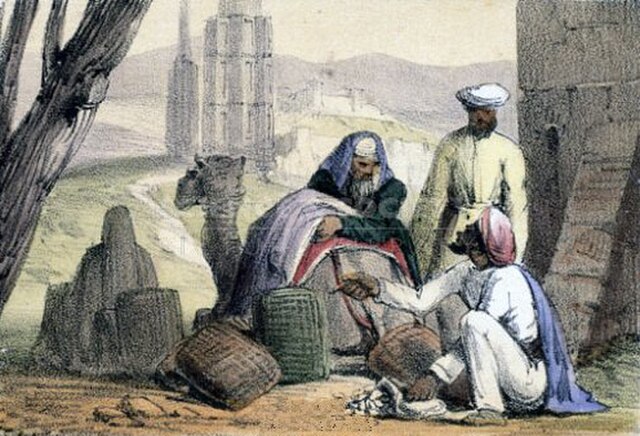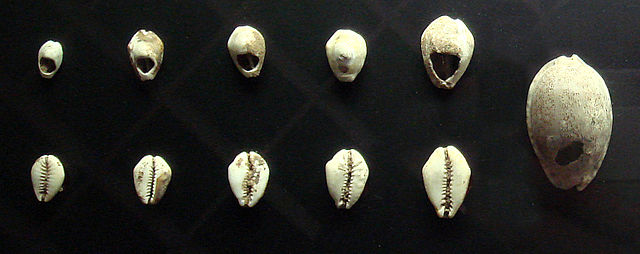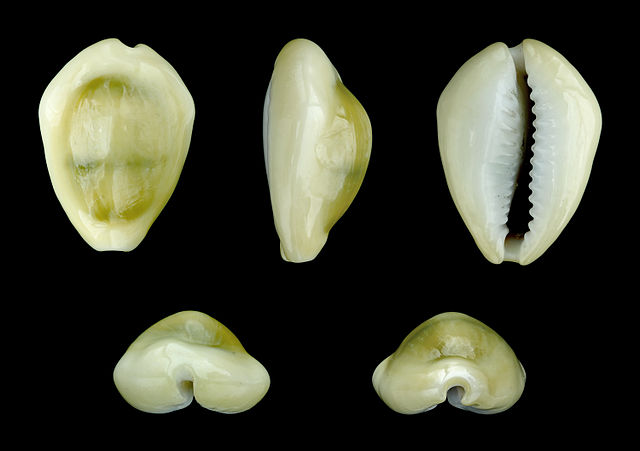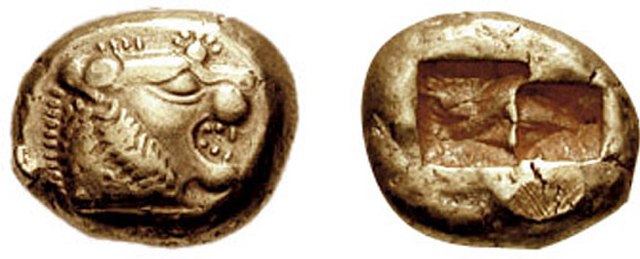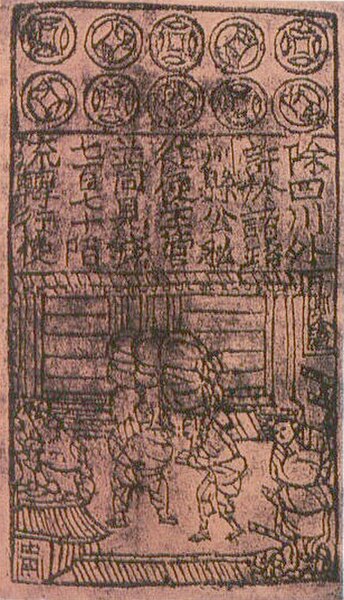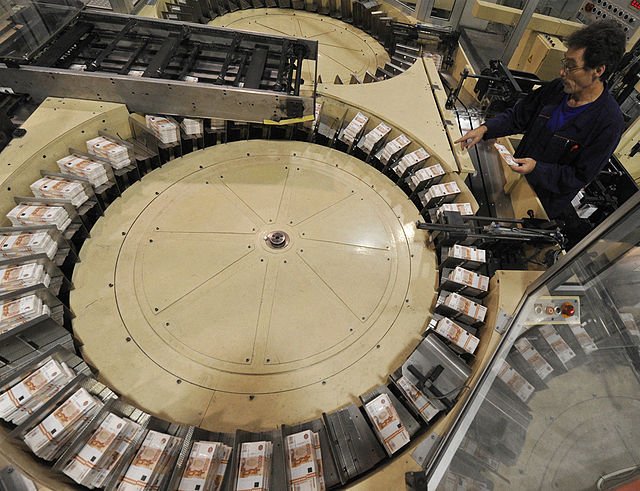Shell money is a medium of exchange similar to coin money and other forms of commodity money, and was once commonly used in many parts of the world. Shell money usually consisted of whole or partial sea shells, often worked into beads or otherwise shaped. The use of shells in trade began as direct commodity exchange, the shells having use-value as body ornamentation. The distinction between beads as commodities and beads as money has been the subject of debate among economic anthropologists.
Antiquities of the southern Indians, particularly of the Georgia tribes (1873)
A print from 1845 shows cowry shells being used as money by an Arab trader
Chinese shell money, 16–8th century BC.
Money cowry; length 2.6 cm; Palou Tello, Batu Islands, Indonesia
Money is any item or verifiable record that is generally accepted as payment for goods and services and repayment of debts, such as taxes, in a particular country or socio-economic context. The primary functions which distinguish money are: medium of exchange, a unit of account, a store of value and sometimes, a standard of deferred payment.
Banknotes and coins
A 640 BC one-third stater electrum coin from Lydia. According to Herodotus, the Lydians were the first people to introduce the use of gold and silver coins. It is thought by modern scholars that these first stamped coins were minted around 650 to 600 BC.
Song Dynasty Jiaozi, the world's earliest paper money
Printing paper money at a printing press in Perm


